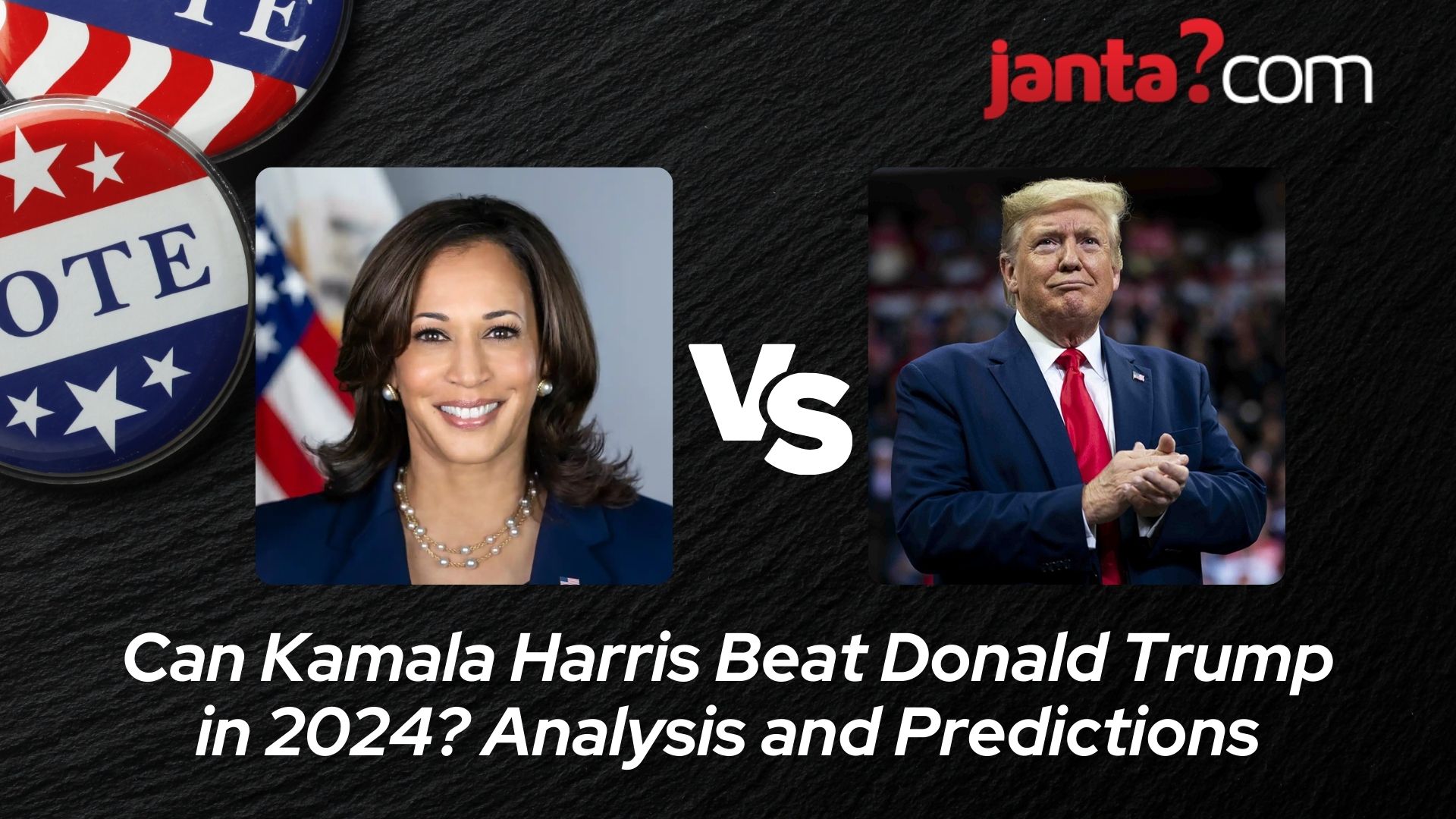“I’ve decided the best way forward is to pass the torch to a new generation. It’s the best way to unite our nation. I know there was a time and a place for long years of experience in public life. There’s also a time and a place for new voices, fresh voices, yes, younger voices. And that time and place is now,”
said President Biden, as he delivered his speech from the Oval Office announcing his decision to drop out of the 2024 presidential race.
Kamala Harris, who was the VP candidate of the Democrat party, is now set to run against the Republican candidate, Donald Trump, and become the first female president of the United States. However, there are growing concerns about whether she will be able to defeat the former president.
In this article, we will analyze the key factors that could determine if Kamala Harris can beat Donald Trump in 2024.
Kamala Harris’s Political Background
Kamala Harris’s political career began as the District Attorney of San Francisco, followed by her tenure as Attorney General of California. In 2016, she was elected as a U.S. Senator, gaining national attention for her incisive questioning during Senate hearings.
As Vice President, Harris has been a key player in the Biden administration, handling significant issues like immigration reform and voting rights. Despite facing challenges such as public criticism over her handling of the border crisis, she has achieved notable accomplishments, including her work on COVID-19 vaccination efforts and advocating for infrastructure development.
Donald Trump’s Political Background
Donald Trump’s presidency from 2017 to 2021 was marked by a mix of significant achievements and deep controversies. His administration focused on tax cuts, deregulation, and reshaping the judiciary, while his “America First” foreign policy redefined U.S. engagement worldwide.
Post-presidency, Trump remains a dominant figure in the Republican Party, leveraging his substantial influence to shape its direction. His political career continues to be defined by strong support from his base and ongoing legal and public controversies.

Current Political Landscape
State of the Democratic Party
The Democratic Party is currently struggling with internal divisions and external pressures. While it boasts successes in areas like healthcare and economic relief, it faces challenges such as managing the progressive versus moderate factions within its ranks. Kamala Harris holds significant influence within the party. However, her popularity is mixed, with some praising her leadership and others questioning her effectiveness.
State of the Republican Party
The Republican Party is grappling with its identity and direction post-Trump presidency. Trump’s influence remains substantial, with a significant portion of the party’s base loyal to him. This support has been instrumental in shaping the party’s policies and candidate endorsements. However, internal divisions and the fallout from Trump’s controversies present ongoing challenges for the GOP.
Polls and Public Opinion
Recent Polls
Recent polls provide a snapshot of the evolving political landscape. For instance, a poll released by the Economist/YouGov found Biden would lose to Trump 41% to 43%, while Harris was losing 39% to 44%. However, supporters of Harris are optimistic that the stats will change given that President Biden has stepped down.
Public Sentiment
Public sentiment plays a crucial role in shaping election outcomes. Harris is viewed by many as a symbol of progress and diversity, appealing to voters who prioritize issues like social justice and climate change.
On the other hand, Trump resonates with voters who feel disillusioned with the political establishment and prioritize economic growth and immigration control. Key factors influencing voter sentiment include the candidates’ handling of current issues, their public personas, and their ability to connect with the electorate’s concerns.
Key Issues and Campaign Strategies
Policy Platforms
Kamala Harris’s policy platform is likely to focus on progressive issues such as climate change, healthcare reform, and social justice. Her proposals will aim to address both national and global challenges, aligning with the Democratic Party’s broader agenda. Donald Trump’s policy platform will likely emphasize economic growth, deregulation, and stringent immigration policies, reflecting his previous administration’s priorities.
Campaign Strategies
Kamala Harris’s campaign strategy will likely leverage her historic candidacy, emphasizing her diverse background and progressive policies to mobilize a broad coalition of voters. Her ability to effectively communicate her vision and address public concerns will be crucial.
Trump’s campaign strategy will likely focus on energizing his loyal base, using his media presence to dominate the narrative and highlight his accomplishments. Both candidates must navigate their strengths and weaknesses to appeal to undecided voters.

Strengths and Weaknesses
Kamala Harris
- Strengths: Leadership qualities, extensive political experience, and the ability to appeal to diverse voter groups. Her historic candidacy as the first female and first woman of color Vice President can energize key demographics.
- Weaknesses: Public criticisms of her tenure as Vice President and perceptions of ineffectiveness. Overcoming these hurdles will be essential for her campaign.
Donald Trump
- Strengths: Strong base of loyal supporters, significant media presence, and the ability to influence public discourse. His charisma and direct communication style resonate with many voters.
- Weaknesses: Controversies, legal issues, and polarizing public perception. Expanding his appeal beyond his base will be a key factor in his campaign.
Key Battleground States
Key battleground states such as Pennsylvania, Michigan, Wisconsin, and Florida will play a decisive role in the 2024 election. These states have diverse voter demographics and have historically swung between parties, making them critical for both candidates.
Targeted advertising, grassroots mobilization, and addressing state-specific issues will be crucial strategies. Understanding voter trends and preferences in these states will be essential for both Harris and Trump.
Potential Scenarios
Harris Victory Scenario
A Harris victory could be driven by factors such as high voter turnout among minority groups, effective campaign messaging, and successful policy proposals addressing key issues. Her presidency would likely focus on progressive reforms and enhancing social justice.
Trump Victory Scenario
A Trump victory could result from mobilizing his loyal base, capitalizing on economic concerns, and leveraging his media presence. His return to the presidency would likely emphasize continuity with his previous administration’s policies and address issues like immigration and economic growth.
Conclusion
The potential 2024 presidential race between Kamala Harris and Donald Trump is set to be a defining moment in American politics. With both candidates bringing unique strengths and facing significant challenges, the outcome will depend on a complex interplay of factors. As the election approaches, the dynamics of the political landscape, voter sentiment, and campaign strategies will continue to evolve, shaping the future direction of the United States.
For more political information and analytics, follow Janta.
